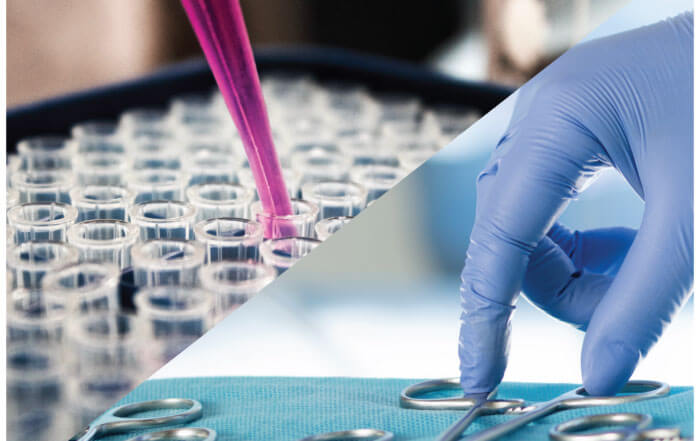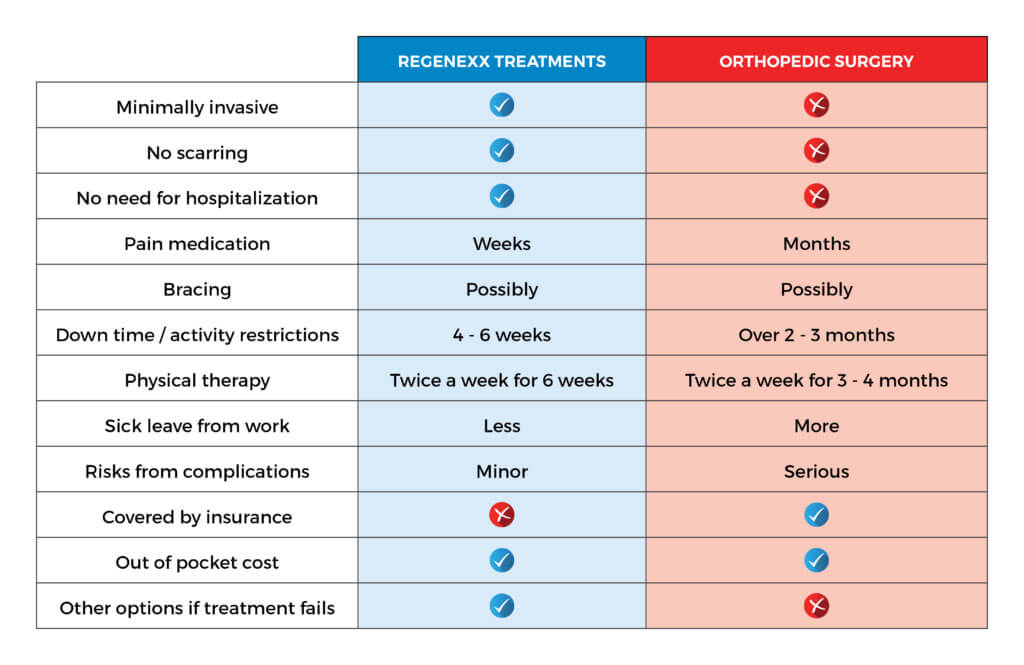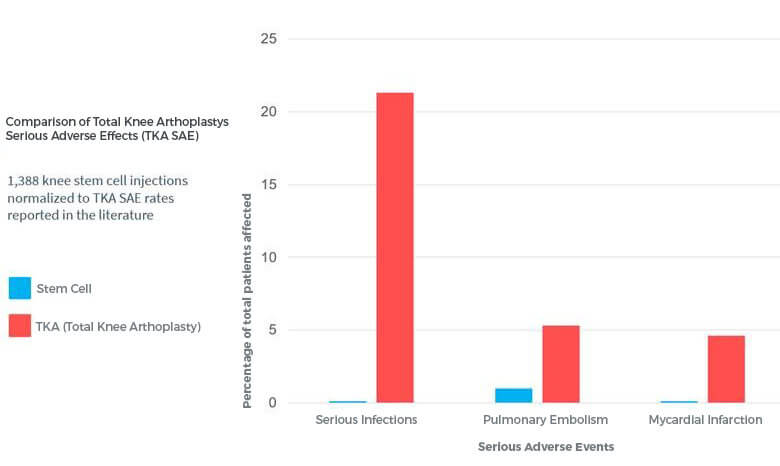You’ve tried exercise, physical therapy, acupuncture, changing your diet, taking supplements, and exhausted your options. When joint issues get to this point, there are two main options left to seriously consider: Stem cell treatments or traditional surgery.

Although Regenexx Cayman is an orthopedic-focused stem cell clinic, we don’t recommend our treatments for everyone. You should consider all your options in full, to get the best possible results for your condition.
Stem cell vs surgery: what’s the difference?
If you’re looking at your options, here are some of the high-level considerations:

Risks and complications
Stem cell treatments use a precise, needle-guided technique to replenish your damaged area. This minimally invasive procedure enables your body to begin the process of self-repair, while lowering the risks associated with orthopedic surgery.
Stem cell procedures utilize cells from your own body, are minimally invasive, use only a needle, and therefore have significantly reduced risks/complications compared to the surgical alternative. Nerves, blood vessels, and lymphatics are uninterrupted. Traditional surgery has a significantly higher risk of infection, bleeding, blood clots, heart attacks/strokes, pulmonary embolism, allergies to medications/artificial components, and post-procedure pain. The most common adverse reaction after a Regenexx stem cell procedure is some temporary increased pain and swelling at the site of treatment.

Source: https://pssjournal.biomedcentral.com/articles/10.1186/1754-9493-4-12
“I am a very active 63 YO retired Firefighter and love to work out, fish, water ski (competitively). went down to Cayman for two torn rotator cuffs. I’ve had two surgeries for my right shoulder and am adamant about never going through another conventional surgery. I’m now just over two weeks out from treatment and my shoulders feel great, almost too good to be true. If I went the conventional route, both of my arms would probably still be in slings, meaning I couldn’t have done both shoulders at the same time and would have had the long rehab of conventional surgery. NO THANKS! The only thing is, it is out of pocket, but what price do you put on the correct health care?” – Richard K, Regenexx-C Patient
Scarring
There is the possibility of scarring whenever the skin sustains damage; however, there are no visible scars with stem cell injections.
Keyhole surgery makes it possible for some surgeons to make small incisions and leave little to no visible scarring; however, surgery for some orthopedic issues, such as total hip replacement, cannot be completed through keyhole methods.
Hospitalization
Regenexx Cayman procedures have a shorter recovery time than traditional orthopedic surgery and there is no need for hospitalization.
Pain medication
Regenexx procedures require less need for pain medication than traditional surgery. Patients may require pain medication for one or two weeks post-stem cell or blood platelet procedure, with many patients requiring much less. Whereas traditional surgery pain medication requirements can vary from a month to two months.
Bracing
Both Regenexx procedures and surgery may require bracing after the procedure. This depends on what part of the body is treated or what surgery was performed.
Downtime and activity restrictions
Regenexx procedures require significantly less downtime compared to the surgical alternative. Recovery time after a Regenexx procedure is typically reduced by more than 60%. Most patients are back to normal daily activity within a few days, with modified activity over the first 6 weeks post procedure. Surgical procedures may require months of downtime and activity restrictions.

Physical therapy
Physical therapy is a vital component to healing with both Regenexx and surgical procedures. Most Regenexx procedures require less time in physical therapy (PT) than the surgical alternative and better post-procedure function allows the immediate implementation of PT.
Sick leave
The majority of people are back to work within the same week of a Regenexx procedure. Depending on the procedure and location, there may be some recommendations for temporary work restrictions. Some traditional surgical procedures require patient to miss months of work while they recover.
Insurance coverage and out of pocket costs
Both treatment options require out of pocket expense. Currently, Regenexx procedures are not covered by insurance. The out of pocket cost for surgery is variable depending on the insurance plan, the deductible, the out of pocket maximum, co-insurance etc. However, avoiding invasive surgery means reduced recovery resulting in less lost wages from work.
Other options if treatment fails
If a surgery fails or pain returns after a surgery, there are limited treatment options – other than additional surgery to remove more tissue or replace the artificial components. If a Regenexx procedure fails or pain returns, a patient can easily repeat the procedure, pursue other injection-based treatments, or, if severe enough, move on to surgery. Regenexx procedures do not limit the ability to get a surgery in future if needed. Most surgeries limit the ability to get a Regenexx procedure in the future.
Our number one priority at Regenexx Cayman is to produce the best patient outcomes possible. Everything about our patented technology is designed for results. Regenexx invests heavily in innovation and research, owning 44% of all orthopedic stem cell research in the world, which allows us to continually bring the best product to our patients. The Regenexx procedures are needle based orthobiologic procedures designed to amplify the body’s ability to heal itself.
Contact our Patient Care Team to learn more and see if stem cell therapy is the right choice for you.
Originally published on Regenexxcorporate.com.